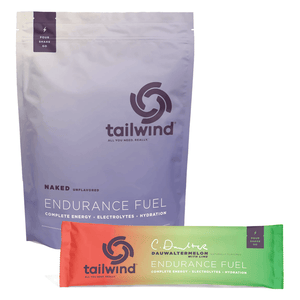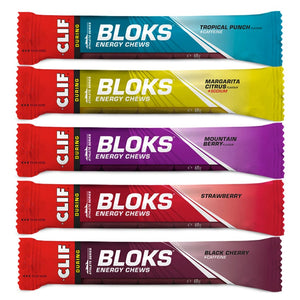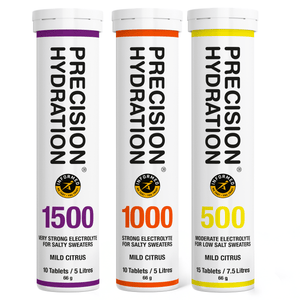It’s your choice - with our knowledge.

Product Insights
Discover more about the products in this article

Hydrogel Sports Jelly
Featured Products
Fuelling for a 24 hour race
Have you ever had the urge to tackle a 24 hour race? That's 24 hours running around a 400 meter track, sometimes the loop is a bit longer but a standard event is now a 24 hour track race, with the objective of running as far as you can in the allotted time.
A personal challenge, or searching for a qualification time for either the British Spartathlon team or a place in the Great British 24 hour squad for the IAU European or World Championships. To give you an idea of the requirements, take a look at the requirements;
Qualifying | British Spartathlon Team To achieve a ballot qualifier, you need to be able to achieve the following: Men = 180km/112.5 miles (12.48m/m pace in 24 hours) Women = 170km/106.25 miles (13.33m/m pace in 24 hours)
For the a place on the British Athletics team the distances are significantly harder, the last team selected to run for GB in a team of 12 with each male and female athlete covering between 210-275 kilometres
More than just a long run there is a lot of planning to go long in a 24 hour race, nutrition is a key factor and for each athlete this can look very different.
So we asked three endurance athletes, all with different personal targets a series of questions to gain insights into the strategies adopted to run a 24 hour event.
The three were also tackling the distance in the same race on the 30th October to 31st October 2020, starting and finishing at 10 am, as part of a field of 30 runners.
We asked them about the event and their overall experience, what fuel they use and how they prepared for this monstrous challenge!
What are the main difference with fuelling for a Track 24 race over a standard format point to point ultra?
Melissa Venables - I think it is much easier as you can have more flexibility in your planning and change things up if you need to. I had a set plan for drinking / fuelling every 30 mins on the track whereas in a point to point ultra I will continually sip little and often, topping up at regular intervals with carbs / calories (this is often on hills where a natural walk break occurs). There are pros and cons for me as I am quite a good drinker but a rubbish eater - point to points you are carrying everything so drinking little and often is easy. With the track, I am drinking a larger quantity in one go and that feels more arduous and I think is more of a strain on the gastro system. You don’t have to carry the weight though and can change your mind at any 400m point. You also have the luxury of loos every 400m if things go wrong!
Damian Carr - In a track 24 hour race, you will see your crew a lot more so use them. Your plan and strategy should be more smoother than a point to point ultra. However, do not underestimate the mental aspect of the track. Where in a point to point ultra the change in scenery can be a welcome break mentally in a track it's a different story. So be prepared for that mental battle and look to ways to cope with that.
Alison Walker - The track is repetitive, so it is important to schedule the fuelling to time. You are also able to access your fuel every 400m/1k depending on the loop distance so you can pack different fuel and pick what you want when you need it!
Samantha Amend - Benefit of a track is that you don't have the hassle of carrying a backpack or waiting to come to aid stations as the fuelling if things change during your race its on hand.

What is your go to fuel?
Melissa Venables - I use a mix of solid food, gels and carb drinks. Favourite gels are Mountain Fuel Hydrogel Sports Jelly, Unived elite gels and High5. Unived are great for higher calories / carbs whereas the other two are half the calories / carbs but really easy to get down. Carb drinks are Tailwind and Unived. Electrolytes are For Goodness shakes nectar tabs. Protein shakes are for goodness shakes 3:1. Solid food I’m not so good with but find even if things are going wrong I can usually tolerate bananas and jelly babies. Mountain fuel flapjack, cashew nuts and Kendal mint cake have also been good in early stages. Coke is always a favourite of mine but at the track race when things all went wrong with fuelling, sweet tea was a godsend!
Damian Carr - My go to fuel is Mountain Fuel Raw Xtreme Energy Fuel. I will alternate every hour with water. However in a ultra the intensity is much lower than say a marathon road race so the intake of fats and protein need to be considered.
Alison Walker - My go to fuel is Unived because of the high calorific content of the elite gels (190 calories) given I struggled to fuel in a previous 24 hour race in tooting due to the heat. To vary the textures in my mouth, I also had some Clif bloks as it isn’t very sweet and some sushi. I had also planned to take a recovery shake every 6 hours to give my body some protein during the race. As a heavy sweater, I take 500ml of PH every two hours, alternating with water to taste. I try not to start on caffeinated gels until 12 hours into the race as I know of the caffeine lows when you stop taking them. So I leave caffeine to when I absolutely need it and I take Unived gels for caffeine (double espresso) as it sits well with my gut.
Samantha Amend - Revvies Energystrip, Banana, Flat coke, Tailwind, Huma Gels (New recommendation from XMiles). Less Heavy meals as I struggle to run but supplied myself fuel every 1hr and warm food planned beyond 100 miles. I tend to go for easy digestible light food I can pick up on the move.

How do you fuel the 24 hours? Strategy, routines?
Melissa Venables - I have to have a strict plan with required minimum calories / carbs calculated per hour that I then make myself stick to for as long as possible even if I don’t want to. If I didn’t do this and gave myself choice, I wouldn’t take on anything other than a few gels and electrolyte drinks. I combined fuelling with a walk break every 30 mins and this was aiming for 200 - 300 calories per hour (57 gms carbs - calculated on bodyweight) split into two and comprising of a mix of carb drinks, food and gels. I tried to allow myself at least one or two walk breaks where I didn’t have to eat anything as I hate eating when running. This was to give myself a break mentally more than anything. Every 4 hours my fuel was a protein shake which gave me a good hit of calories / carbs, protein and that opportunity not to take a gel or food. I really looked forward to these breaks. This all worked till 18 hours when I had a phase of vomiting and not wanting to take anything in. I say it worked in the sense that I was taking everything as planned and fuelling when I needed to be but unfortunately was in the loo every 30 mins until 8 hours in I relented and took Imodium! Which I also had to take again a couple of hours later! At 14 hours I took on extra fuel as I was struggling with a couple of pre existing injuries and was struggling to run! Extra fuel seemed to help and I had another good 3 hours of running. At 18 hours when the vomiting started, I had got really cold walking and ended up taking 30 mins out in the tent to warm up. I then got back out, fuelled every 30 mins but winged what I was taking in - it was a mixture of sugary tea, lots of mountain fuel jellies, Coke and banana. It worked and I did manage to commit to the walk/run plan (albeit slower) for the last 5 hours. Interestingly, this was around the same time my fuelling strategy got ditched at the NDW100 although there I just dry heaved and managed not to vomit. I also didn’t have the same gut issues early on - mane because I was sipping a slow supply of carb drinks rather than taking it all in one hit!
Damian Carr - It is important to start your race hydrated. So days leading up to the race is key. During the race my top tip is use the nutrition that you have practiced with in training.
Alison Walker - 250 calories an hour using a mixture of Unived, chews and PH electrolytes for change in textures. Also a “meal” at mealtimes such as sushi, noodles or porridge!
Samantha Amend - Eat the few days leading up carbs and food that doesn't inflame the gut, i.e. bland food and vegetables just a little more. Try not to get stressed but do up the water and fluid not to end up in a deficit. Strategy take on food to keep topped up and a few sips of Tailwind.

Do you prepare differently for a 24 hour race?
Melissa Venables - This was my first proper attempt at a 24 hour race so it was a bit of the unknown for me. The training was off the back of my training for the NDW100 (which again was my first 100 miler) though and it wasn’t wildly different as time on feet was always going to be similar. The main difference was the terrain I trained on as for NDW100 I tried to do my long runs off road whereas for the 24 hour race I ran on road / track for my long runs so as to condition the muscles I would be using. I run on my own a lot particularly my long runs. I think doing some of these on the track solo (Particularly in the rain) was great mental prep for the 24 hours. As expected, I used these long runs to test out gear, fuelling strategies, practice pace etc so it was a little different as I had to work hard to adapt to the slower pace when on the road, off-road it came more naturally because of the terrain slowing me down.
Damian Carr - With a 24 hour race I tend to focus on the mental battle I will be faced with. I think of strategies to use in the race to keep me focused on the task in hand. One trick that works for me is that I treat myself to a army ration pack meal. As an ex member of the British army it reminds me of all the challenges I have overcome before, so when I tuck into the bag, it tells me to stop wringing and crack on.
Alison Walker - Yes, due to the repetitive nature of the loops you have to condition your body to be ready to engage the same muscles again and again.
Samantha Amend - Not really if anything less stressed with it, it's the pace races that add more pressure as you cannot hide and need to be able to push. 24 hours are more about mindset and strength to dig in when it gets tiring. The hardest part is the taper as you need it more than a shorter race where I often just lighten training but in essence "train through".
It’s your choice - with our knowledge.












































































































